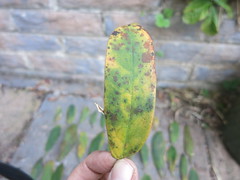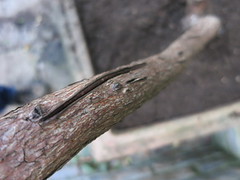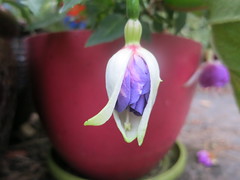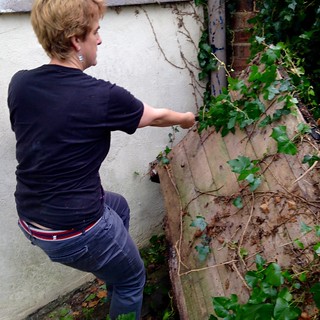There are times when you look out of the window and think - actually, it has to be today. That plant is going; it is nearly gone. So Tim and I struggled
the White Rhododendron (it's not white) out of its huge heavy pot, with its spotted, floppy, failing old growth and its curly, withering, pallid new growth (which looked initially promising after I pulled it up, root trimmed and refreshed the compost earlier this year) and dunked it into the biggest trug with two cans of water for a proper soak.
Rhododendrons love the rain. Near where I went to school, the cliff slip zone had created a tiny soggy microclimate, where it seemed it was always raining. Rhododendrons escaped from the local estate had run riot through the native temperate rainforest (ash, alder, elder, large leaved hazel) and when it rained, their leaves perked; the flowers expanded; there was an almost audible vegetable expansion as they delighted in the rain.
More, they seemed to be saying all through the rainy Mays of my childhood,
more like this.
So I'm also drenching the leaves, twice a day. Not a foliar feed - there's still a lot of nutrients in that fresh compost - just rainwater. I may also consider the compost. For the first time, I'd splashed out on
John Innes, the Rolls Royce of the composting world (complete with the ecological guilt), rather then
my usual peat-free go-to. It seems to be drying out a lot faster - the organic material is finely minced. There's none of the rough bits I'm used to - and I'm wondering if the plant is missing them, too. I might pick up a bag of the cheap stuff and make a mix.
I've also got about a potful of my own ericacious mix (rotted down remnants of evergreens, heathers, firs, rubber plants, etc.) which might help establish soil biome. Every little helps.
Inside the pot the roots weren't looking great, but then Rhody roots just look like a bunch of brown wire, so what do I know? The soil looked dull though - nothing living in it.

 t>
t>




















